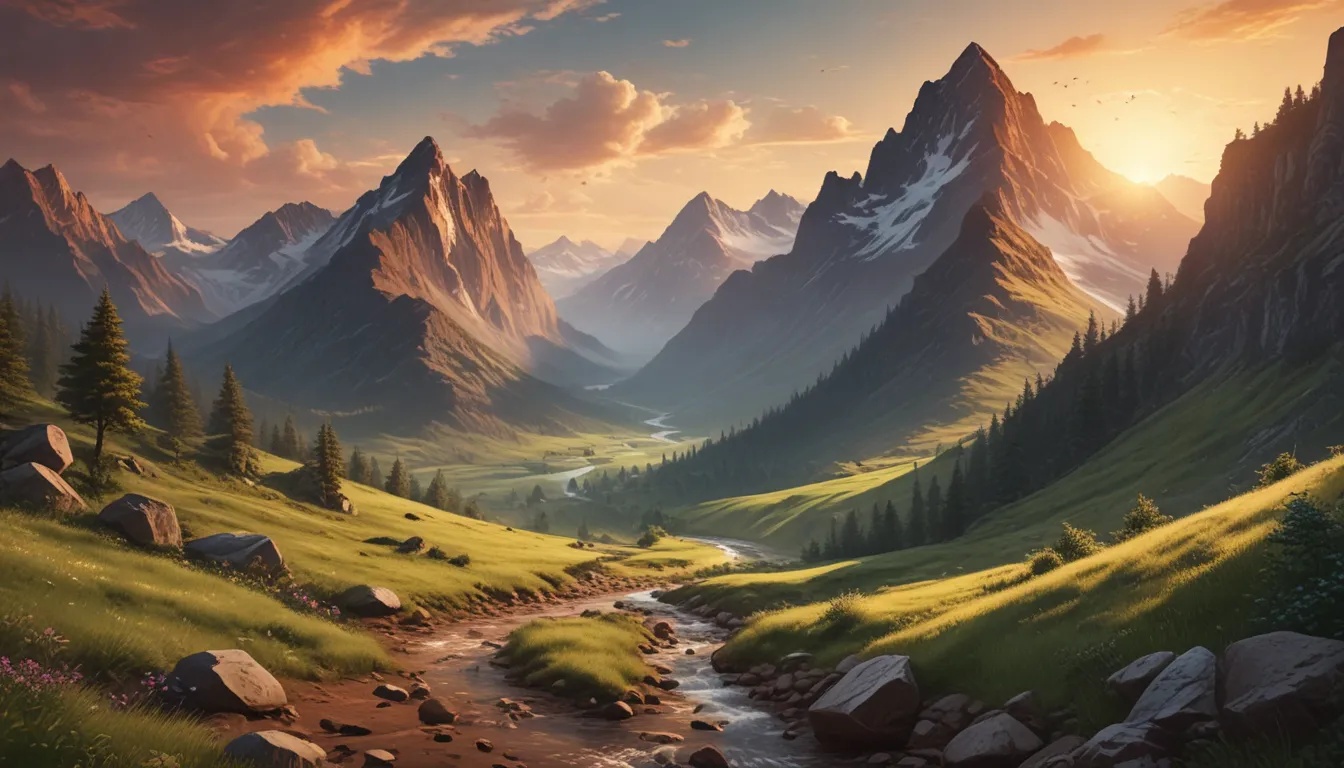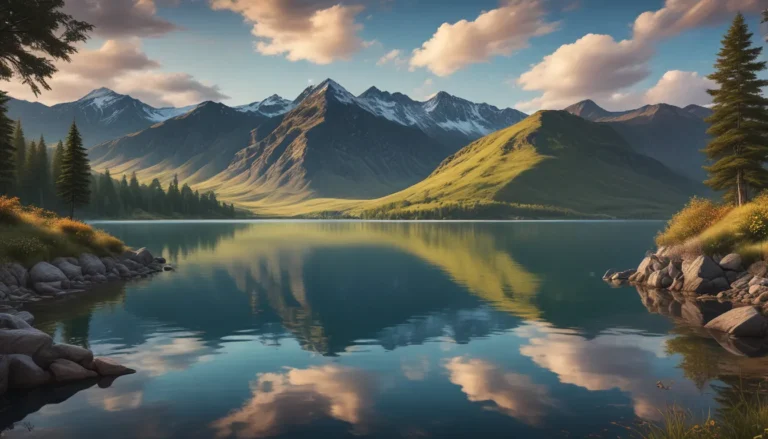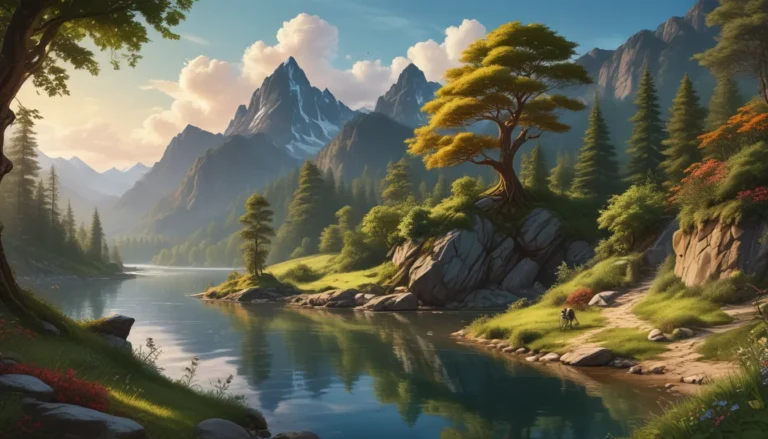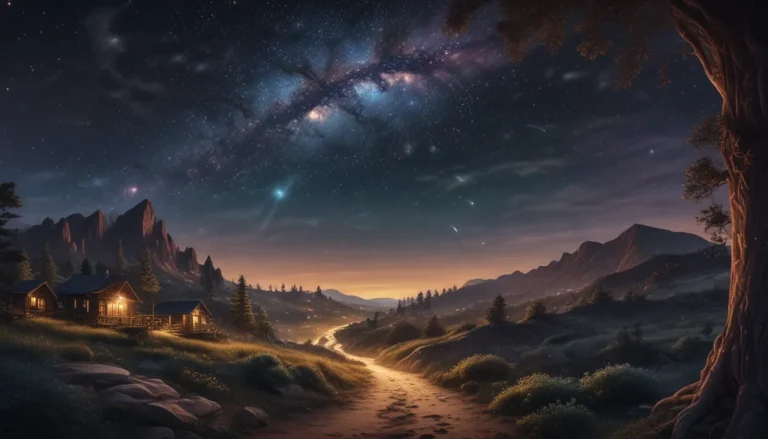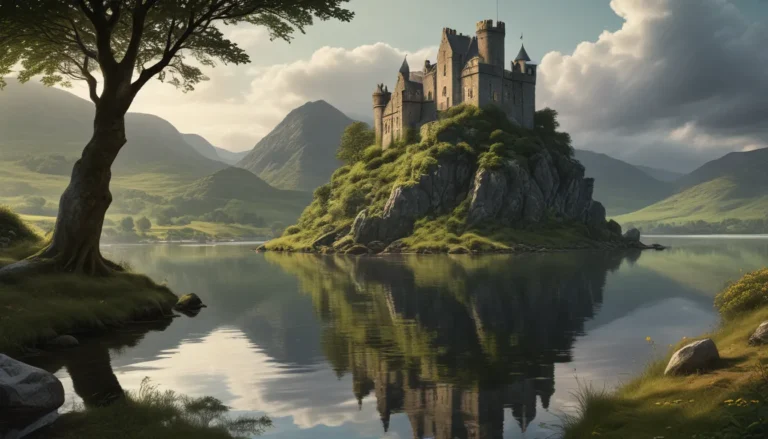The pictures we use in our articles might not show exactly what the words say. We choose these pictures to make you interested in reading more. The pictures work together with the words but don’t take their place. The words still tell you the important facts.
Valleys are enchanting landscapes that showcase the beauty and diversity of nature. From lush green meadows to towering mountain valleys, these natural wonders captivate visitors worldwide. In this article, we will delve into 17 fascinating facts about valleys that highlight their ecological significance, cultural importance, and breathtaking beauty. Join us on a journey to uncover the wonders that lie within these awe-inspiring landscapes!
Exploring Valleys: A Closer Look at Nature’s Masterpieces
- Valleys are diverse and fertile landscapes formed by natural forces, providing homes to various plants and animals.
- Valleys offer recreational activities and inspire art and literature.
- Human activities pose threats to valleys, making conservation efforts crucial.
- Valleys hold cultural and spiritual significance in many societies, connecting people to their ancestral roots and the natural world.
The Marvel of Valleys: Unveiling Their Formation and Characteristics
A valley is a low-lying area of land typically situated between two mountains or hills. It is sculpted by natural erosion processes such as water, glaciers, or tectonic forces over thousands or millions of years. Due to the accumulation of sediment and the presence of rivers or streams, valleys often boast rich soil, making them ideal for agriculture. Valleys come in various shapes and sizes, influenced by geological processes, climate, and the strength of forces at play.
Famous Valleys Around the World: From Grand Canyon to Nile Valley
- The Grand Canyon: Carved by the Colorado River, the Grand Canyon in Arizona, USA, is a magnificent example of a deep and expansive valley.
- Yosemite Valley: Located in California, USA, Yosemite Valley showcases breathtaking glacial formations, including sheer cliffs, waterfalls, and lush forests.
- The Nile Valley: Known as the cradle of civilization, the Nile Valley in Egypt birthed one of the earliest human civilizations due to its fertile soil and reliable water source.
Diversity in Valleys: Types and Ecological Significance
Valleys can be formed through different processes such as tectonic activity, glacial erosion, volcanic activity, or the flow of rivers and streams. This results in a diverse range of ecosystems within valleys, supporting a wide array of plant and animal species. Valleys often serve as natural corridors for wildlife, enabling movement and migration.
Valleys and Human Culture: Technological Innovation to Spiritual Connection
- Silicon Valley: Situated in California, USA, Silicon Valley is renowned as the hub of the tech industry, driving technological innovation worldwide.
- National Parks: Valleys often serve as the backdrop for famous national parks like Death Valley, Shenandoah, and Yellowstone, showcasing the beauty and diversity of nature.
- Cultural Significance: Valleys hold spiritual and cultural significance in many societies, serving as sacred sites and connecting people to their ancestral roots and the natural world.
Conservation and Protection of Valleys: Preserving Nature’s Treasures
Human activities such as urbanization, deforestation, and pollution pose significant threats to the delicate ecosystems found in valleys. Conservation efforts are crucial to safeguard these invaluable natural resources for future generations. By understanding and appreciating the wonders of valleys, we can cultivate a deeper connection to the natural world and advocate for their preservation.
Conclusion: Embracing the Splendor of Valleys
Valleys are unique natural wonders that offer a multitude of outdoor recreational activities and opportunities for exploration. From towering mountains to serene meadows, valleys captivate visitors with their rich biodiversity and geological features. By immersing ourselves in nature and cherishing the beauty of valleys, we can gain a profound appreciation for the interconnectedness of all living things and the importance of conservation.
FAQs: Unraveling Common Queries About Valleys
- What is the Valley?
The Valley refers to a geographic area characterized by deep, elongated, and often steep-sided valleys formed by natural processes such as erosion and glaciers. - Where can I find the Valley?
Valleys can be found in various parts of the world, including famous locations like Yosemite Valley in California, Wye Valley in Wales, and Kathmandu Valley in Nepal. - What activities can I enjoy in the Valley?
Activities in the Valley include hiking, camping, wildlife spotting, photography, fishing, and scenic drives, offering endless possibilities for outdoor enthusiasts. - Is it safe to visit the Valley?
Visiting the Valley is generally safe with proper precautions and adherence to guidelines. Awareness of surroundings, following park rules, and safety measures ensure a pleasant experience. - Can I visit the Valley year-round?
The accessibility and activities in the Valley may vary by season, requiring weather checks and planning. Some activities like hiking may have specific regulations or permit requirements at certain times.
In conclusion, valleys are more than just picturesque landscapes – they are living, breathing ecosystems rich with biodiversity, cultural heritage, and natural wonders. By embracing the splendor of valleys and advocating for their preservation, we can ensure that these remarkable landscapes continue to inspire and enchant generations to come. Journey into the heart of valleys and discover the awe-inspiring beauty of nature's masterpieces.
